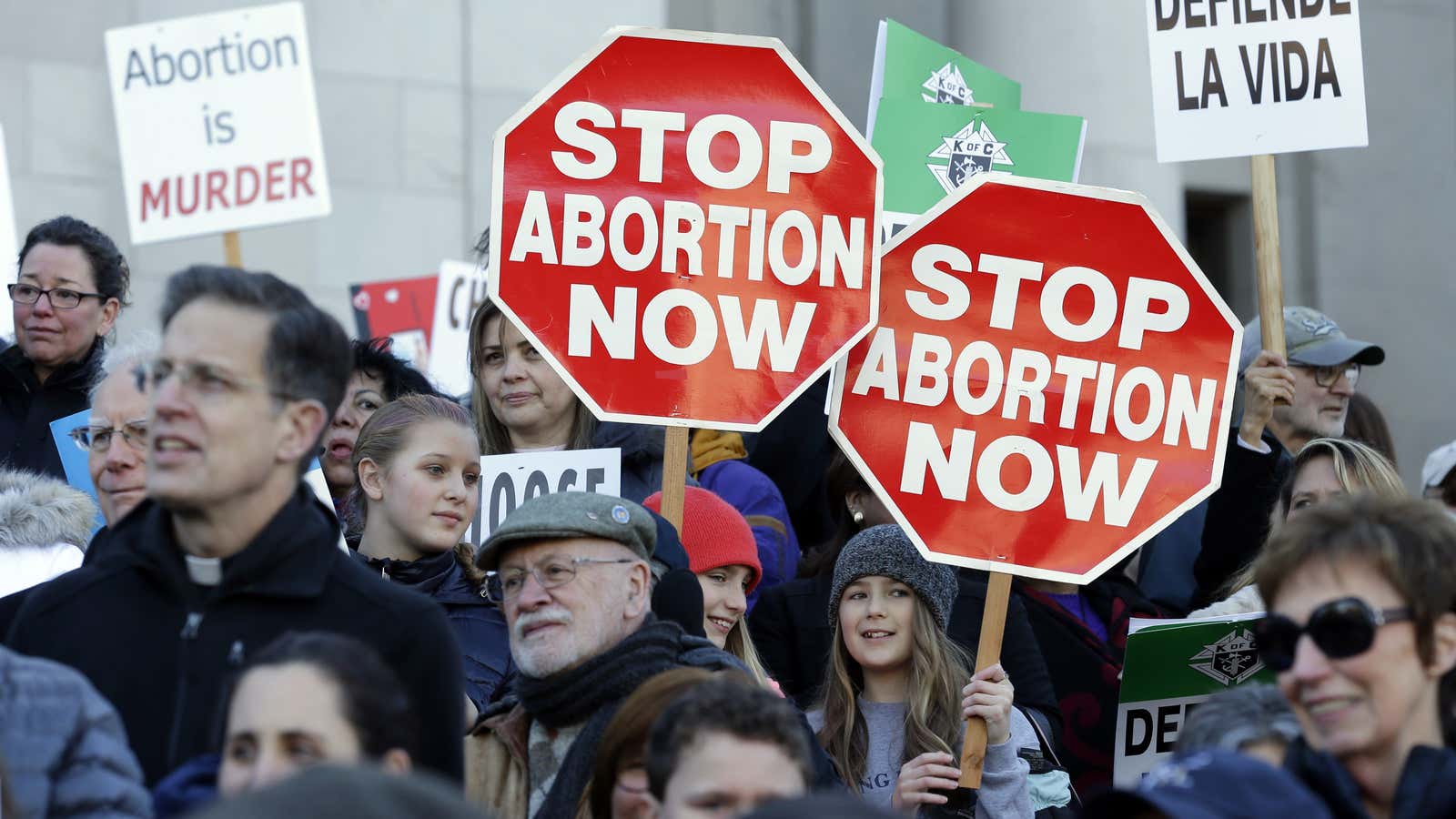If the American Health Care Act of 2017, the Republican party’s proposal to replace Obamacare, becomes law, many things would change in the American health care system. One would be drastically reduced access to abortion services.
Already, thanks to the 1977 Hyde Amendment, federal funds are barred from use to pay for abortion services—with the exception of cases of incest, rape, and pregnancies where the mother’s life is at risk.
The Affordable Care Act created a workaround of sorts to ensure that insurance plans bought on the ACA marketplaces could offer abortion services, despite the fact that they are subsidized by federal funds: an individual’s payment into an insurance plan could be used on abortion services, but not the federal funds.
It’s up to states to decide whether to bar their marketplaces from selling plans with abortion coverage. So far, according to the Kaiser Family Foundation, 25 states have enacted laws to do just that; most of these states allow for the same exceptions as the Hyde Amendment (incest, rape, life-threatening pregnancies). And in six of the states that allow for abortion coverage in their marketplace plans, there is currently no insurance company offering a plan with abortion services included.
In 17 states (and DC) there is at least one plan that covers abortion available on the marketplace, and in two states, Vermont and Hawaii, all marketplace plans offer abortion service coverage.
The Republican health plan proposed to replace all this would give individuals tax credits that, if they want, they can use to purchase marketplace insurance plans. But it would also, under an amendment added on March 20, “ensure individuals and families can only use the federally funded tax credit to help purchase insurance plans that do not cover abortions or abortion services.”
That would leave those people who need abortion services with only two alternatives: pay for abortions out of pocket, or buy a plan outside the marketplace.
“The end result is pretty clear,” says Adam Sonfield, a senior policy manager at Guttmacher Institute, which studies reproductive health policy. For most people, buying a marketplace plan and then paying for abortion services as needed would be way cheaper than buying a plan outside the marketplace.
That, says Sonfield, would lead to “no market for coverage that includes abortion.” Insurance companies would have no incentive to offer it, he said, “because no one would buy it.”
It would also put Americans buying insurance through subsidized marketplace in the same position as those covered by Medicaid or the federally funded Native American and military personnel health care programs, who already cannot get coverage of elective abortion through their plans.
According to Planned Parenthood, without insurance, the abortion pill (also known as a “medical abortion”) can cost as much as $800, and surgical abortions in the first three months of pregnancy can cost up to $1,500 (although often the cost is lower). The price is not particularly steep compared to other common medical procedures, but those numbers don’t take into account travel—which might be required for those who live in underserved areas—or time off work. If the American Health Care Act is approved, more people will find themselves unable to afford ending unwanted pregnancies—and they are the very people who tend to need abortion most, since the majority of abortion patients live below the poverty line.
